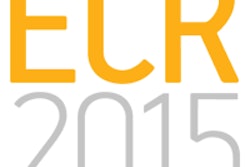In a new survey, patients said they believe the benefits of having a malignancy detected on colon screening exams more than outweigh the drawbacks of a false positive, even if it would lead to unnecessary imaging or invasive follow-up, according to an article published in the October issue of Radiology.
In fact, if the follow-up test was an imaging exam, patients would tolerate a false-positive rate of up to 99% to gain the possibility of a diagnosed malignancy, researchers found. If the consequence of the extracolonic finding was invasive testing, participants were willing to tolerate a 10% false-positive rate. The study was conducted by Dr. Andrew Plum, Dr. Steve Halligan, and Dr. Stuart Taylor from University College London and colleagues from several other U.K. institutions (Radiology, October 2014, Vol. 273:1 pp. 144-152).
The researchers wanted to determine the false-positive rates for hypothetical virtual colonoscopy exams (also known as CT colonography or CTC) that individuals would be willing to tolerate to detect one malignancy, based on two different pathways for following up suspicious findings outside the colon: noninvasive imaging exams or invasive follow-up such as biopsy, endoscopy, or surgery.
Surveys were administered to 52 patients who had been scheduled for unrelated ultrasound exams, and they were also given to 50 healthcare professionals. The individuals were informed about the disadvantages of both the imaging and invasive pathways in terms of complications and related issues.
If the follow-up involved only imaging, the respondents said they were willing to tolerate 599 additional imaging exams to find one extracolonic malignancy, a false-positive rate of 99.8%. For the invasive pathway, respondents said they would tolerate 60 additional invasive tests per malignancy, or a false-positive rate of 10%.
For both questions, patients were willing to tolerate unnecessary additional tests at higher rates than the healthcare professionals. The healthcare professionals said they would tolerate a false-positive rate of 40% for the imaging pathway and 5% for the invasive pathway.
"Because they are more informed about the costs and consequences, especially of additional invasive testing, healthcare professionals were slightly less prepared to tolerate as many false positives as the patients were," Halligan said in a statement.




















